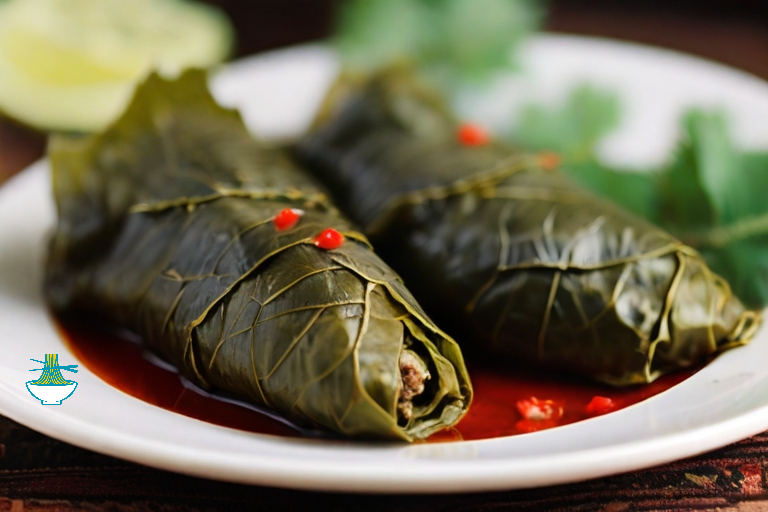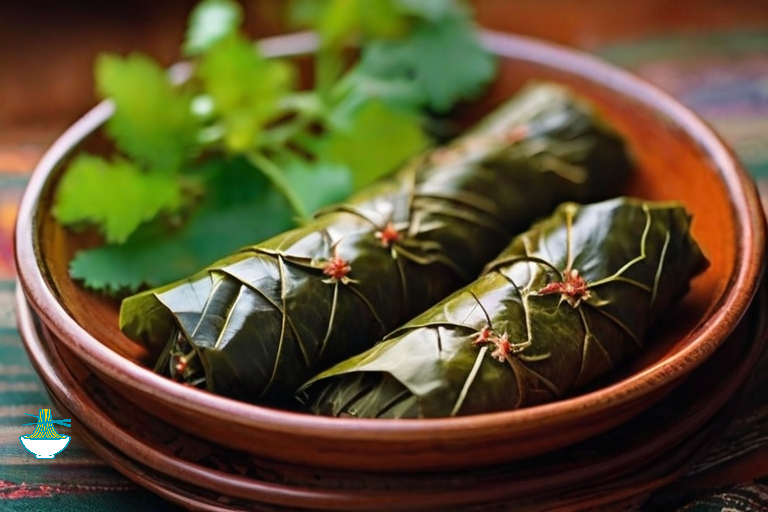Embark on a delectable journey through the rich culinary heritage of Albania as we explore the exquisite flavors of Japrak. This traditional Albanian dish holds a special place in the hearts and homes of many, representing a harmonious blend of history, culture, and taste. As we delve into the art of crafting Japrak, you will discover the unique ingredients, time-honored techniques, and the warm embrace of Albanian hospitality that make this dish a cherished delight. Join us as we unravel the secrets behind the preparation of Albania's beloved Japrak, inviting you to bring a piece of this cultural treasure into your own kitchen.
Ingredients:
For the Grape Leaves:
- 1 jar of grape leaves in brine (about 60-70 leaves)
- 2 cups rice, washed and drained
- 300g ground beef or lamb
- 1 large onion, finely chopped
- 1/2 cup olive oil
- 1/4 cup tomato paste
- 1 teaspoon dried mint
- 1 teaspoon dried oregano
- 1 teaspoon dried thyme
- Salt and pepper to taste
- 1 lemon, sliced (for garnish)
- 4 cups water
For the Sauce:
- 1 cup plain yogurt
- 2 cloves garlic, minced
- Salt to taste

Instructions:
1-Begin by preparing the grape leaves. Carefully remove them from the jar, rinse under cold water, and separate each leaf, ensuring there are no tears.
2-In a large mixing bowl, combine the washed rice, ground meat, chopped onion, olive oil, tomato paste, dried mint, dried oregano, dried thyme, salt, and pepper. Mix the ingredients thoroughly until well combined.
3-Place a grape leaf on a flat surface, vein side up, and trim the stem. Spoon a small amount (about a tablespoon) of the rice and meat mixture onto the center of the leaf. Fold the sides of the leaf inward and then roll it up tightly, forming a compact cylinder. Repeat this process for the remaining leaves.
4-Arrange the rolled grape leaves in a large, deep pot, placing them snugly next to each other. Layer the japrak until all the leaves are used.
5-Pour 4 cups of water over the grape leaves, and place lemon slices on top. Cover the pot and bring it to a gentle boil. Once boiling, reduce the heat to low and simmer for about 45-50 minutes, or until the rice is fully cooked.
6-While the japrak is cooking, prepare the sauce by combining yogurt, minced garlic, and salt in a bowl. Mix well and set aside.
7-Once the japrak is cooked, remove them from the pot and arrange on a serving platter. Drizzle the yogurt sauce over the top.
8-Serve the Albanian Japrak warm, with additional lemon slices on the side if desired. Enjoy the flavors of this classic Albanian dish that beautifully marries tradition and taste!
Nutritional Values:
It's important to note that the nutritional values can vary based on specific brands, preparation methods, and other factors. The values provided below are approximate and based on common nutritional databases:
Grape Leaves (60-70 leaves):
- Calories: 15-20 kcal (for one leaf)
- Carbohydrates: 3-4g
- Fiber: 1g
- Protein: 0.5g
- Fat: 0g
benefits
- Rich in antioxidants.
- Good source of vitamins A and K.
- May aid digestion.
Rice (2 cups, cooked):
- Calories: 400 kcal
- Carbohydrates: 88g
- Fiber: 4g
- Protein: 8g
- Fat: 1g
benefits
- Excellent energy source.
- Contains essential minerals like manganese and selenium.
- Provides dietary fiber for digestion.
Ground Beef or Lamb (300g):
- Calories: 700-800 kcal
- Protein: 60g
- Fat: 50-60g
- Carbohydrates: 0g
benefits
- High-quality protein for muscle health.
- Rich in iron for blood circulation.
- Contains essential B vitamins
Onion (1 large):
- Calories: 60 kcal
- Carbohydrates: 14g
- Fiber: 3g
- Protein: 2g
- Fat: 0g
benefits
- Packed with antioxidants.
- Contains anti-inflammatory compounds.
- Provides vitamin C and fiber.
Olive Oil (1/2 cup):
- Calories: 960 kcal
- Fat: 108g
- Carbohydrates: 0g
- Protein: 0g
benefits
- Healthy monounsaturated fats.
- Contains antioxidants.
- May contribute to heart health.
Tomato Paste (1/4 cup):
- Calories: 35 kcal
- Carbohydrates: 8g
- Fiber: 2g
- Protein: 2g
- Fat: 0g
benefits
- High in lycopene, a powerful antioxidant.
- Contains vitamins C and K.
- May have anti-cancer properties.
Dried Mint (1 teaspoon):
- Calories: 1-2 kcal
- Carbohydrates: 0g
- Fiber: 0g
- Protein: 0g
- Fat: 0g
benefits
- Aids digestion and soothes the stomach.
- Contains antioxidants and anti-inflammatory properties.
- Refreshing flavor.
Dried Oregano (1 teaspoon):
- Calories: 3-4 kcal
- Carbohydrates: 1g
- Fiber: 1g
- Protein: 0g
- Fat: 0g
benefits
- Rich in antioxidants.
- Contains anti-bacterial properties.
- May have anti-inflammatory effects.
Dried Thyme (1 teaspoon):
- Calories: 3-4 kcal
- Carbohydrates: 1g
- Fiber: 1g
- Protein: 0g
- Fat: 0g
benefits
- High in antioxidants.
- Contains vitamins C and A.
- May have antimicrobial properties
Salt and Pepper (to taste):
- Negligible caloric value
benefits
- Enhances flavor.
- Regulates fluid balance.
- Essential for various bodily functions
Lemon (1 sliced):
- Calories: 4-5 kcal
- Carbohydrates: 1g
- Fiber: 0g
- Protein: 0g
- Fat: 0g
benefits
- Excellent source of vitamin C.
- Supports immune function.
- Adds a citrusy flavor.
Water (4 cups):
- Negligible caloric value
benefits
- Essential for hydration.
- Aids digestion and nutrient absorption.
Plain Yogurt (1 cup):
- Calories: 150 kcal
- Carbohydrates: 8g
- Protein: 12g
- Fat: 8g
benefits
- Good source of probiotics for gut health.
- High in calcium and protein.
- Supports bone health.
Garlic (2 cloves, minced):
- Calories: 10 kcal
- Carbohydrates: 2g
- Protein: 0g
- Fat: 0g
benefits
- Contains allicin, known for its anti-inflammatory and antioxidant properties.
- May have cardiovascular benefits.
- Supports the immune system.
Salt (to taste):
- Negligible caloric value
benefits
- Essential for electrolyte balance.
- Regulates fluid levels in the body.
Remember, these values are general estimates, and actual nutritional content may vary. Adjustments can be made based on specific dietary needs or preferences.


Comments